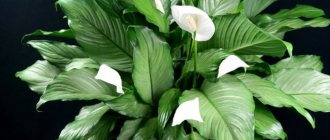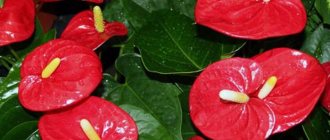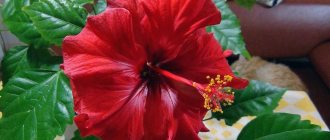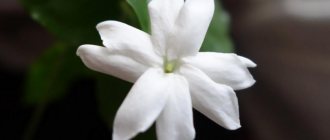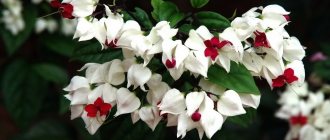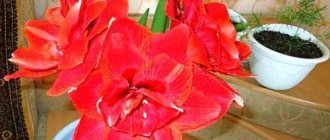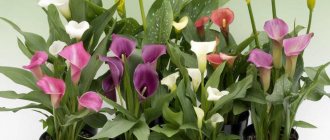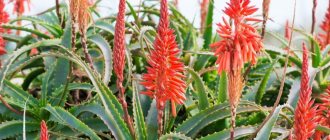How often does Decembrist bloom?
The Decembrist can be seen in many houses in Russia. During the cold winter, this tropical cactus is covered in numerous colorful flowers.
Most Decembrist varieties bloom once a year. The buds begin to appear at the end of October and begin to bloom in December. Schlumbergera can bloom for a long time, allowing you to admire the colorful flower throughout the winter.
If the Decembrist is kept in good conditions, a secondary flowering may begin in April, which is usually more abundant than the first.
There are rare varieties of Schlumbergera that bloom 3-4 times a year.
When and how does Schlumbergera bloom?
A tropical cactus that leads an epiphytic lifestyle blooms in summer in its homeland. Since Russia is located in the northern hemisphere relative to Brazil, the budding period falls in the winter months. In November, buds appear, which gradually open their corollas, replacing each other. Over the course of 2-3 months, you can contemplate the abundant flowering of exotic flowers, after which the plant is given another dormant period of 8-12 weeks.
This is interesting! Some zygocacti sometimes bloom again in the spring.
Why doesn't Decembrist bloom at home?
When purchasing a Decembrist, everyone expects it to bloom brightly and profusely. However, often it never begins to produce buds. There are many reasons why Schlumbergera does not bloom.
Incorrect temperature
Although the Decembrist's homeland is the tropics, he does not like extreme heat.
Under room conditions, the optimal temperature for growing crops is approximately 180C.
Constantly being warm, the plant itself feels good, but does not form buds. It is useful to remove it to a cooler place a few months before the Decembrist should begin to bloom.
Violation of the watering regime
Like all succulents, Decembrist does not like excess water. Any excess moisture can lead not only to the absence of flowers, but also to the death of the plant itself.
Excess moisture, accumulating in the fleshy leaves and soaking the root system, can cause rotting processes or provoke the development of various diseases.
Change of place
Decembrist is very sensitive to his location. For culture, it is important that the light source is constantly on one side.
If you move the pot from place to place or turn it around during the formation of buds, then Schlumbergera may shed all the existing buds and not begin to form new ones.
Incorrect lighting
It is no less sensitive to Schlumberger light than to water. Direct sunlight does not allow zygocactus to bloom, and in some cases leads to a complete absence of flowers.
In autumn and winter, it is preferable to keep the plant in a bright place in the western part of the apartment. When at rest, it is better to put the Decembrist in a shaded place.
Excessive application of fertilizers
Schlumbergers thrive in poor, sandy soil.
Applying large amounts of fertilizer leads to fattening. At the same time, green, fleshy leaves develop intensively, but the Decembrist does not want to bloom.
When planting, it is advisable to use neutral soil enriched with sand and peat.
Growing in deep pots
Decembrist has superficial roots and does not need a deep container. Water accumulates at the bottom of such pots, which interferes with the normal process of root respiration.
No rest period
The dormant period is very important for the formation of flower buds. If Schlumbergera is constantly kept in the same conditions, then it will most likely never bloom.
The first dormant period is needed after flowering, the second - before the buds open. At this time, the Decembrist should be placed in a darker and cooler place.
What to do if the Decembrist “frozen” while flowering
If the Christmas tree has gained color, but is in no hurry to open its corollas, do not rush to conclusions. This process takes a lot of time and effort from the exotic. If there is visible “fading,” you will have to push the plant to bloom using growth stimulants.
Apply foliar feeding to the foliage using plant phytohormones gibberellins. These natural substances help to disrupt the state of dormancy of plant tissues, which will push the Brazilian guest to active vegetation and the opening of buds.
Conditions for keeping the Decembrist, what it needs for flowering
By growing Decembrist in favorable conditions, you can easily make it bloom colorfully and for a long time. Failure to comply with at least one factor can weaken the formation of buds.
Lighting
Schlumbergera is demanding on lighting conditions. Direct sunlight will not make it bloom and can even lead to the death of the plant itself.
Decembrist feels good on western or northern windows. It is important to provide bright but diffused sunlight throughout the day.
Air temperature
The temperature in the room where the Decembrist grows should differ in different phases of its development. After the last flowers fade, in spring and summer, the plant lives quietly at 240C.
Before blooming, in the autumn months it is advisable to place it in a cooler place where the temperature will not exceed 17-180C.
And during the formation of buds, it is better to move the pot to a warm place.
Indoor air humidity
In its natural environment, Decembrist grows in the tropics, in conditions of high humidity. The room must also be protected from dry air.
A sign that a flower lacks moisture is wrinkling and loss of elasticity of young leaves.
It is important to regularly spray Schlumbergera with a spray bottle. Do not place the pot near heating systems. It’s good if there is a vessel with water nearby.
Watering
Abundant and regular watering provides succulents with the moisture they need. However, it should not be frequent.
It is important not to let water accumulate even in small quantities. It is recommended to water Schlumbergera when the top layer of soil dries 4-5 cm.
Decembrist does not bloom for several years - reasons
Complaints from flower growers that Decembrist does not bloom are quite common. It is worth remembering one truth - if a flower does not throw out buds, then the conditions of detention are violated. The reason may be failure to comply with one or more conditions, which we will discuss in detail.
Watering
Excess moisture, as well as its lack, contributes to drying or rotting of the flower. Try not to let the soil in the pot dry out. The plant should receive water in equal portions at regular intervals.
Important! After drying out, the plant takes a long time to recover and does not bloom!
Set up a schedule to mark the day or date of watering. It is recommended to water the leaves with a watering can with a water spray, a shower spray or a spray bottle for 5-10 minutes. This creates an imitation of tropical rain and refreshes the plant.
Make sure that after watering there is no water remaining in the stand under the pot.
Pot size
No matter how surprising it may be, the Decembrist does not bloom if its root system is not in the required volume. A too cramped or, conversely, large pot will result in the plant not blooming.
Zygocactus has a weakly branched root system, which is well attached to the bark of a tree in nature, but at home this can become destructive.
Important! It is not recommended to plant a flower in a large pot in the hope of more shoots and flowers!
With a large volume, the need for more watering and soil moisture increases. Too much humidity causes the buds that have already appeared to fall off. The best option is a flat pot for the Decembrist, in which it is easy to monitor the humidity.
Diseases and pests
Another reason for the lack of buds on a flower is damage by pests and diseases. Insects feed on the sap of the plant, which leads to wilting and the inability to grow and bloom.
Main enemies:
- mealy nigella;
- scale insect;
- spider mite
Among the diseases, the plant affects:
- late blight;
- fusarium;
- Pythium.
To combat them, it is necessary to replant the flower in new soil, treat it with fungicides and insecticides to prevent infection.
Heat and lighting
A room that is too warm or cold can cause the Decembrist to lack flowering; it loves cool weather. The optimal temperature is 21 degrees during the day and 15-18 degrees at night.
In extreme heat, it is recommended to close the window with a thick curtain so that the sun's rays do not fall on the flower. Also, having an air conditioner in the room will help prevent it from withering and drying out.
Some gardeners, fearing for the flower, create complete darkness in the room. This prevents the plant from setting new buds and starting to bloom.
Important! If you find purple leaves on a flower, this indicates an excess of sunlight!
Important terms:
- Provide sunlight at sunrise and sunset for 2-4 hours. The rest of the time there should be diffused light.
- From September to December, the flower should have 12 hours of darkness, from evening to morning. Avoid street lights that shine through the window onto the flower.
- Decembrists bloom in winter. Therefore, it is important for them to create a period of rest - from mid-October to the end of November. There is no need to touch the plant, moisten it once every 2-3 weeks, put the flower in a cool room.
It is important to arrange such a dream for the flower 50 days before the onset of the budding process.
Remember, in order for the Decembrist to bloom and please the eye, avoid sudden changes in caring for the flower. It is unacceptable to make sudden changes in temperature, lighting (too sunny or dark around the clock), high humidity or drying out. All this contributes to the fall of the ovaries of buds and flowers.
How to make Decembrist bloom, what to do
If a plant doesn't bloom year after year, don't give up. There are ways you can make Schlumbergera bloom.
Climate change at rest
If the Decembrist misses the budding phase in winter, then several months before the next expected flowering you need to put it in a cool place with a temperature no higher than 150C.
Watering must be reduced. In the fall, you need to return the Schlumbergera to its usual place and provide it with enough water and good lighting.
This will cause the Schlumbergera, which has returned to its normal life cycle, to bloom.
Schlumbergera rejuvenation
Decembrist may stop blooming due to old age. In this case, the bush requires renewal pruning. It is usually carried out in the spring.
This will also make the Decembrist bloom.
Carefully cut off 1-3 outer segments from all branches. You also need to remove diseased, dried out shoots that thicken the central part.
REFERENCE. Torn leaves can be rooted in a glass of water or by deepening them into the soil.
Transfer
One of the reasons why Schlumbergera does not bloom may be inappropriate soil used during planting.
It is better to replant Decembrist into a ready-made soil mixture for cacti. If desired, you can prepare it yourself. To do this, you need to add sand and peat in equal proportions to the garden soil. Changing the habitat will also cause Schlumbergera to bloom.
ON A NOTE. Old Decembrists respond well to the application of mineral fertilizers.
Why has there been no flowering for several years? How can I get the zygocactus to bloom?
There are no exceptions when the Christmas tree has stopped blooming and has not been blooming for several years, it stops its growth, and in order to understand what to do, you need to understand the reasons why the Schlumbergera does not bloom :
- lack of proper lighting (little light);
- inappropriate pot size, which should be medium to avoid excessive root growth;
- unsuitable soil;
- lack of watering and lack of fertilizing;
- The plant has not been replanted for several years.
To bring the Christmas tree back to life and make it bloom, you need to remove the plant from the pot and carefully inspect the root system for damaged or dry areas.
If any are found, then it is necessary to eliminate them and wipe the sections with an antiseptic or sulfur. Next, you need to move the Schlumbergera into a special soil for cacti; if necessary, you can change the pot to a more suitable one.
Important ! After replanting, you should restore watering to the plant, fertilize it with nitrogen fertilizers and place the pot in a bright place, but avoiding open sunlight. After the “operation”, the Christmas tree will definitely begin to grow.
Unfortunately, Schlumbergera often actively develops, but does not bloom for several years.
Seasoned flower growers recommend arranging a “drying” for the Christmas tree:
- Take it to a cool place and stop watering.
- After 2-3 weeks, the Decembrist is returned to the warmth and begins to water and fertilize as usual. After such a stressful situation, in most cases, buds appear on the plant, and after 2 months the flowering period begins.
Here's how to adjust the seasonal cycle and make the Christmas tree bloom in winter.
How to care for Decembrist at different times of the year, table by month
Decembrist is an unpretentious flower that can live in almost any conditions. However, it may not bloom due to many factors.
In order for Schlumbergera to bloom, it can be forced to do so with the help of emergency measures, or you can simply provide special conditions at different times of the year.
| Month | Period | Temperature (0c) | Watering | Top dressing | Lighting |
| September – early November | peace 1 | 15-18 | 1 time/2 weeks | disposable nitrogen-containing | 12 hours/day blackout (3 weeks) |
| end of November - January | formation of buds; bloom | 17-20 | 1 time/week | 1 time/2 weeks mineral | full, without direct sunlight |
| February March | peace 2 | 13-16 | 1 time/2 weeks | mineral | scattered |
| April - August | vegetation | 25-27 | regular | 1 time/month | full, without direct sunlight |
Caring for a flower during flowering
The blooming Decembrist requires special attention. By providing favorable conditions, Schlumbergera can be made to bloom for several months.
- Flowers on Schlumbergera bloom gradually. It is important to immediately remove faded specimens from the flower stalks.
- During flowering, the plant is especially sensitive to air humidity. It is important to constantly moisten the room; you can place a saucer or vase with water nearby. Spraying is not advisable; water can get on the buds and cause them to fall off.
- During this period, you need to provide the Schlumbergera with good watering. Abundant and regular, it should not be frequent.
- When the plant is blooming, do not move, rearrange or rotate the pot.
By following simple rules, you can admire the bright colors of Schlumberger throughout the winter.
What to do to make the zygocactus gain color?
Given favorable conditions, Schlumbergera produces flower buds for 2-3 months in a row. In order for the Decembrist to begin its flowering period, it is necessary to create the most comfortable conditions for the flower :
- Maintain a cool temperature in the room, eliminating drafts and sudden temperature changes.
- Make sure that the air humidity is about 50-70%.
- Do not plant zygocactus in a large flowerpot.
- Fertilize regularly, providing the Schlumberger with all the necessary nutrients.
- Water thoroughly in summer and minimize watering during bud formation.
- Do not move or rotate the flowerpot once the plant has buds.
- Regularly inspect the flower for pests.
Read more about how to make Schlumbergera bloom here.
The lack of Schlumbergera flowering certainly upsets flower growers, but the situation can be corrected. You just need to take a responsible approach to growing a flower and organize proper care for it, adhering to simple rules, and you can forget about all the problems with the growth, development and flowering of the Decembrist, all that remains is to admire its flowers.
What to do when buds appear so that they bloom and do not fall off
During the budding phase, you may encounter the fact that they fall off without blooming. Following a few rules will help avoid this situation.
- It is important to remember that under no circumstances should you move the Decembrist to another place or turn the pot.
- The plant should be protected from direct sunlight, which can burn the delicate buds.
- It is necessary to prevent water from getting on the buds.
- It is advisable to water after the top layer of soil has dried.
What to do after the flower has faded
After the Decembrist has flowered, it must be properly prepared for the dormant period.
- A month after flowering, you can carry out rejuvenating pruning by removing old and dried shoots.
- It is useful to give the green part of the plant a warm shower. It is important to protect the soil from the penetration of excess moisture with a film.
- Watering must be gradually reduced.
- Creating a comfortable temperature for relaxation.
ON A NOTE. Such actions help the plant recover and gain strength for the new season.
How to water and feed Schlumbergera
The Decembrist flower needs systematic watering. Usually it is watered after the soil has completely dried, in summer - once every 3-5 days, in autumn - once a week. It is generally accepted that reducing watering at the end of summer has a beneficial effect on the formation of flower buds by the plant. Schlumbergera will not tolerate overwatering, so it is better to moisturize it with moderate doses. Some novice gardeners water the crop in a tray, but in this case, the remaining water from the saucer must be removed after half an hour - otherwise constant exposure to a humid environment threatens the flower with rotting roots.
Like most plants, especially cacti, Decembrist does not need frequent or abundant watering in cool weather. Contrary to controversial opinion, spraying will not do him any good. Remember that in natural conditions - and these are tree branches - moisture as a result of tropical downpours does not linger there. But you can wipe the leaves with a piece of damp cloth or a moistened and well-wrung out sponge. The main condition is that the water should be warm (25-28°C), the same as when watering.
- How often should you water indoor flowers - a schedule for the whole year
Proper watering is the key to healthy growth and absence of diseases in your window pets.
Despite the wide range of advice on the topic, it is worth feeding Decembrist primarily with complexes for cacti and succulents. These could be, for example, specialized fertilizers Agricola, Fusco, BONA FORTE and others. Each of them is used strictly according to the instructions. But folk remedies should be treated with caution: it is unlikely that in the tropics Schlumbergera is fertilized with yeast or tea leaves.
Some instructions for fertilizers may not indicate fertilizing by month, but refer to the dormant period. For a plant that blooms in November–February, this period begins after flowering ends, that is, in the spring, and not in winter, like most plants. During the dormant period, the Decembrist flower is not fertilized for a month or two. The signal to resume fertilizing will be the appearance of young leaves on the plant. Otherwise, winter care for the Decembrist is not much different from the standard: sufficient light, regular moderate watering and protection from hypothermia.
- Helping indoor plants survive the winter - 5 important points you might have forgotten
Some indoor plants fall asleep in winter, while others, on the contrary, are preparing to bloom. And everyone needs special care!
Tips and Tricks
Experienced flower growers use various tricks to care for the Decembrist to make it bloom long and profusely.
- Adding rotted manure to the soil during spring replanting makes it bloom more strongly.
- Decembrist can be protected from direct sunlight by hanging crops that need bright rays.
- Using thick curtains, you can protect the pot with Decembrist from heating devices.
- Containers with water located nearby provide the necessary air humidity.
Care after flowering
Beginning gardeners, having admired the flowering of the Decembrist, completely forget about the subsequent care of the flower. Some argue that it should be left alone, given the opportunity to rest, because the flower is exhausted. But in practice, experienced gardeners recommend the following:
- Carefully remove faded buds without damaging the shoots.
- Increase the number and duration of watering and spraying.
- Feed with fertilizers, give pest control medications for prevention.
Don’t forget, spring is coming and the entire care cycle needs to be repeated if you want to enjoy the blooming Decembrist again.
Common mistakes
When caring for the Decembrist for the first time, it is important not to make mistakes that will prevent it from blooming. The main ones:
- fertilizing immediately after flowering;
- use for planting acidic soil;
- location of the flower on the south side of the room;
- keeping at high temperatures;
- lack of conditions for plant rest;
- water getting on leaves and buds when watering.
Eliminating these errors increases the likelihood that Schlumbergera will bloom next season.
Answers to frequently asked questions
When growing Decembrist, most of the questions that arise are related to flowering. Knowing the answers to some of them, you can easily make this ornamental crop bloom.
Why do you need to put Decembrist in a dark place during the dormant period?
Answer : Schlumbergera flower buds begin to form when it is in the dark for at least 12 hours during the day. This regime should be followed for 2-3 weeks.
What water is best to use for irrigation?
Answer : It is better to take settled or spring water. It is important that its temperature does not differ from room temperature.
How often should Schlumbergera be replanted?
Answer : It is recommended to replant as necessary, in accordance with the growth of the plant. Unscheduled replanting if the land is contaminated or severely depleted.
When is the best time to prune?
Answer : The terminal segments are cut off approximately a month after flowering. Usually this is March - April.
How long can Decembrist bloom?
Answer : Under favorable conditions, it begins to bloom in late November and can bloom until February.
How to make Decembrist bloom a second time?
Answer : To make Schlumbergera bloom again, you need to create the necessary conditions for this.
During flowering the plant became sick, is it possible to replant?
Answer : It is strictly not recommended to disturb the Decembrist during flowering. If the situation persists, then it is better to wait for a period of rest.
Flowering periods of the Decembrist flower
Rozhdestvennik is an unusual cactus. Unlike his fellow tribesmen, he loves water and shade, and has no thorns. The plant is a small bush up to 40 cm in height, the branches of which are directed downwards and resemble flat cuttings connected to each other. At the ends of the stems, bright flowers appear, consisting of several tiers.
The roots of the Christmas tree are weak and die quickly in unfavorable conditions. The flower, however, survives due to the presence of aerial roots that actively absorb moisture from the environment.
The annual life cycle of the Decembrist is a change of periods of dormancy, flowering and growing season. It usually blooms from November to January. This is due to the origin of the plant - in the Southern Hemisphere, summer falls during the European winter. The flowering period is preceded by dormancy in October-November. At this time, the Decembrist is actively preparing for flowering.
Around February, after flowering ends, a second dormant period begins, and it lasts until mid-March. From March to September, active flower development is observed. He grows taller and new shoots appear. At this time, the Christmas tree requires careful attention and proper care.


